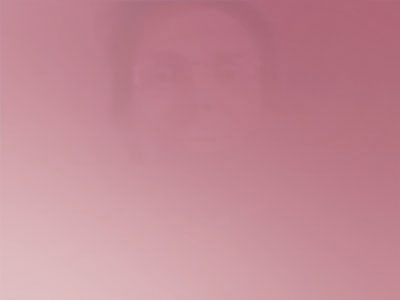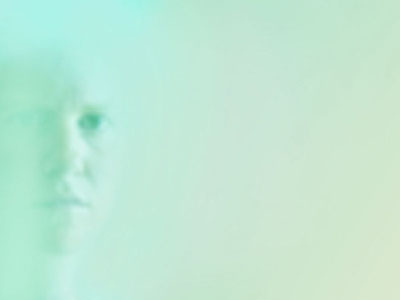 |
[July 28th 2005]

Trine Eidsmo. Photo:
Pontus Dahlman.
10*10
10 questions for 10 Nordic artists.
Current artist:
Trine Eidsmo.
Artificial sets out to dig an alternative route through the activities on the Nordic scene for computer based art. We wanted to find a way to sidestep the restrictions in our own particular outlook so we are therefore launching an unpredictable series of interviews, which will hopefully help us uncover the hidden potentials out there.
We handed Norwegian artist Trine Eidsmo a set of 10 questions and she will in turn pass them on to an artist of her choice. After answering the same questions, this artist will choose a new artist ... and so forth. The only criterion for the participants are that they live and work in Scandinavia and create computer based art. In the end, 10 Nordic artists will have answered 10 questions about their art, working process and much more.
Trine Eidsmo lives and works in Trondheim, Norway, where she is the director of TEKS - Trondheim Elektroniske Kunstcenter http://www.teks.no. She exhibited the eMotions triptych at Electrohype-ROM and the Electrohype Biennial 2004 in Malmoe, Sweden. http://www.electrohype.org/rom/trine.

From eMotions at Electrohype-ROM and Electrohype 2004, Malmoe. http://www.electrohype.org/rom/trine.
What is your background?
I studied Nordic languages for one and a half year, and then I did three years of arts teacher training. An exchange program brought me to the arts academy in Tilburg, Holland, where I finished my exams in 1999. After that I have also done some information science.
Describe your working process.
Each time different. Ideas might stick in my head for quite a while before they pop. Most of the time the process involves periods of playing, testing, working with sketches. At times consciously 'going to be art', other times not. I don't know what I prefer - something in between? Even as the piece takes shape I keep working and working on it. Thus the process is slow. In a way the pieces never finish - because each time they are put up, they will be adjusted to that new space.
Do you solve your technical issues yourself (do you e.g. program yourself) or do you rely on the cooperation with a programmer or a technician?
This depends. If the technical issues are too challenging, and too far away from what I already know; demanding an unreasonable amount of investigation and studies, I would prefer to develop the work in some kind of cooperation. Certain kinds of programming e.g. Max/ Jitter, I do myself.
In which way do you describe your art?
It is difficult to give a general description. I guess my recent work is quite 'silent', demanding time, patience and concentration. At other times I have made quite the opposite - not noisy in terms of sound, but in having very direct and explicit visual expressions.
When it comes to form, I do different things. The expression depends on what I try to say. I prefer working with installations, objects, video, digitally manipulated visual material and programming in different combinations.

From eMotions at Electrohype-ROM and Electrohype 2004, Malmoe. http://www.electrohype.org/rom/trine.
How would you describe the relation between computer based art forms and the traditional art forms?
The only difference ought to be the techniques used. The demand for content and context is the same. At times computer based arts might demand knowledge or skills at a technical level before one is able to go on to the level of interpreting the ideas of the work itself. This element is hopefully getting less and less obvious though.
Which role should art institutions and galleries play in regards to work like yours?
They should supply good curators and venues for showing good art -no matter of what kind. They ought to have basic equipment also for showing electronic art though.
Which exhibition form do you regard as ideal for your art?
It all depends on the work. I sometimes prefer it as the work might be 'discovered' by the passer-by - placed between people, in and around buildings to be actively investigated. At other times I'd prefer the gallery or another quiet, more dedicated spot. It is not so much the definition of the space as it is the atmosphere.
How would you describe the situation on the Nordic scene for computer based art?
There are a lot of people around with competence and talents, though it is not easy financially, to have things done. City councils and governments don't really seem to appreciate the art form -or maybe there is only a lack of knowledge -or courage?
How do you support yourself financially as a digital artist?
Well, I guess that's the problem. At the moment I am director of TEKS -Trondheim Electronical Arts Centre in Trondheim, Norway. An 80% position here pays the rent; it regrettably takes quite some chunks of time as well. Thus there is less left for actually making the art.
What are you working on now?
I have got several ideas at an early stage, none of them which are ready to go. On the technical side I'm playing with motors, electricity and basic stamps.
I'm also preparing a work that I sold a while ago, for being put up.
Most of all I'm planning the Trondheim Matchmaking festival though, a festival for arts and new technology in Trondheim in October. Fourth year in a row this year, and hopefully it will be good this time as well; interesting, different and fun!-)
|
 |
|